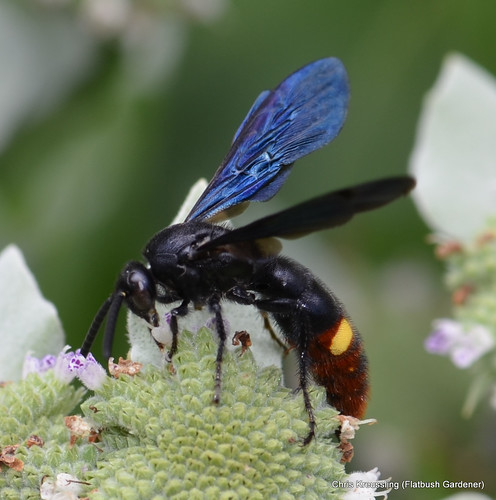
Another little jewel of a wasp that is new to me this year. I've been seeing it on the Pycnanthemum, but was unable to get decent photos of it until yesterday. I've also seen it on the Clethra alnifolia, Summersweet in my garden, which just started blooming in the past week.
With the wings held back, the blue iridescence of the wings might lead one to mistakenly identify this as a small Sphex pensylvanicus, Great Black Wasp.
Scolia dubia
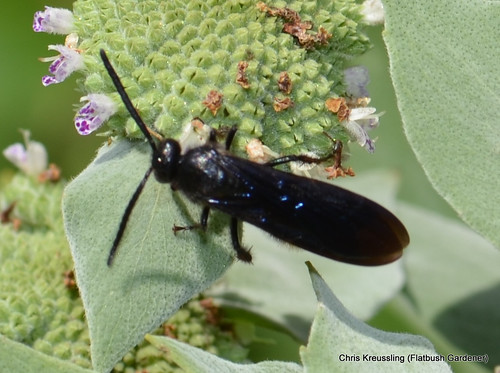
Sphex pensylvanicus
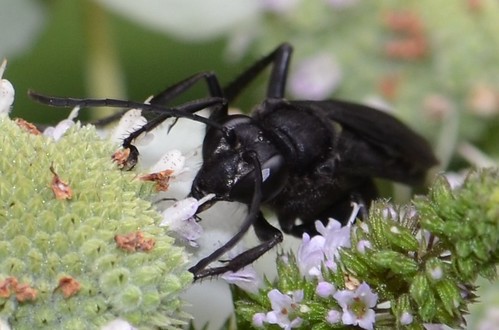
But once the wings spread to the sides, the exposed abdomen distinguishes it. The cinnamon- colored abdomen and two bright yellow spots make for a clear identification, once you know the species.
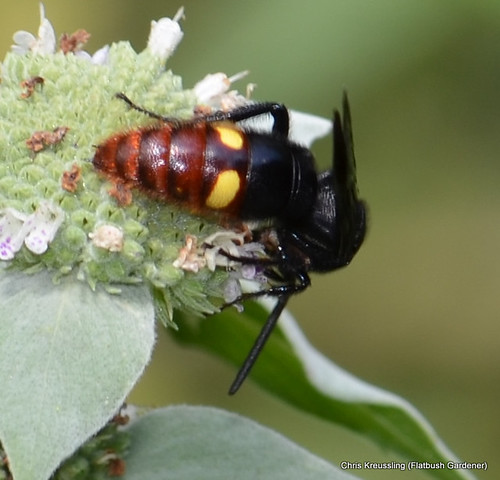
Adults feed on nectar, which both the Mountain-Mint and Summersweet offer in abundance.
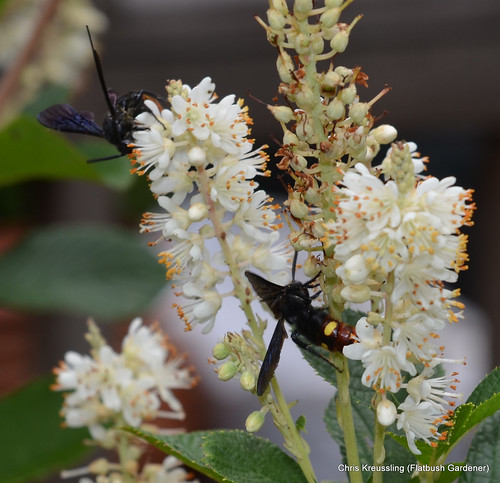
Females dig in search of grubs of June Bugs and Japanese Beetles to parasitize with their eggs. The wasp larva feeds on the beetle grub and overwinters as a cocoon, emerging the next year.
This species is another example of the importance of providing habitat for wasps in the garden; they are natural bio-controls of other insects that might otherwise overwhelm the gardener's intentions.

Thank you for blogging about them! I was excited to find Blue-winged Wasps on our goldenrod this afternoon, but couldn't identify them until I found your post.
ReplyDeleteThank you very much! Just saw these little things in the cemetery where we walk. They are crazy fast flitting around! Had to wait a bit to see one land and stay still. Beautiful!
ReplyDeleteThank you for sharing helped me know what they were. Do you know if they sting?
ReplyDeleteThank you for the information with regards to this important bee! They are feasting on my spearmint flowers and are welcome to Eliot Japanese beetles as well!
ReplyDelete